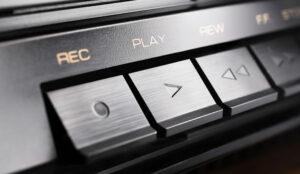Garth Hinkel of Business Systems looks at how EIM (enterprise information management) brings call recording into mainstream information management.
Call recording is a well-established technology, and most contact centres are well into their second, third, fourth and even fifth iterations of this technology.
And therein lies much of the problem, specifically for those firms required to store, manage and audit all of those recordings for regulatory and compliance reasons.
Indeed, the trend fuelled by GDPR has exacerbated the problem to the point that an EIM process is essential to handle this effectively.
Without an EIM process, managing the output from just one recording system is hard enough, considering the vast amount of recordings produced, but realistically the situation is worse.
Add into that challenging environment a combination of end-of-life product cycles, some technology upgrades, and perhaps product replacement from a new provider.
Unless remedial action is taken, the problem escalates and morphs into disparate silos of data where operational management is substandard, hugely inefficient and extremely costly – all to be avoided in a sane world. Hence the timely entrance of EIM.
EIM is, of course, a strategy rather than a specific product, albeit that clever technology and sophisticated software is required to deliver a federated solution from those disparate data silos.
It brings together a much-welcomed uniformity of data, management control and auditable access across the entire call recording estate and is a real boon to those responsible for compliance.
Once implemented, EIM provides a portal to the important information businesses require as and when needed – as witnessed by the following examples.
The Importance of the Portal
These examples explain how three major investment banks dealt with the problem of voice recording complexity, detailing how specific technology helped with their legacy and interoperability issues, as well as compliance, all of which were essential strategy elements.
In our first case, a global/Tier One US bank faced a set of intersecting challenges around legacy and data governance.
This organization was running a system based outside the EU, but the system had reached end of life and so was out of support from the vendor.
This all happened in 2003, which coincided with when the version of Microsoft Windows Server it was running on was also coming to end of life.
This presented a high commercial and compliance risk, with old trader calls trapped in a soon-to-be-outdated legacy infrastructure.
The team also needed to keep call recordings for the full required retention period, and another interesting aspect of this project was that the bank had its data stored in a platform that it had a mandate to move from.
Using a modern agnostic central portal – one that can locate data easily from different systems and locations, be that ‘live’, on-premise, ‘live’ in the cloud, or even obsolete legacy storage – all its data was easily moved to a different location.
In this case it was on-premise, and from there the portal was able to replay the bank’s voice recordings any time it needed to access them.
This customer also managed deletion of calls past their retention period – in this case, this was a hundred million-plus records but it was able to delete 30% of that load.
Extract out of Third-Party Systems to the Business Process You Want
In a second example, a well-known French investment bank had ten live recorders across a large estate and wanted to extract this data into a planned new analytics application.
It needed a solution to automate this – and speedily, as there was only a limited overnight window available in order to extract data.
For larger bank IT estates with lots of different voice recording systems, the requirement is for a tool that can do that quickly and effectively.
Here, a centralized interface solution gave the customer the ability to extract from multiple call recording systems overnight.
Even better, regardless of the way the call is captured, the customer has a means of extracting the data to the new analytics application that sits on top of the voice recording stack.
It’s also future-proofed, so if they change the analytics application, they can simply extract those voice recordings to the new target platform.
A powerful example of interoperability in action, and of an efficient use of software from different vendors doing what you tell it to.
And in our third example, we see the impact of multiple new channels – this particular organization had the usual proliferation of different voice recording platforms, but also needed a way to capture business conversations taking place in Skype for Business, Unigy, and so on.
This organization ended up with one centralized portal that incorporates all the legacy calls, but also performs a full ongoing ingest of all their live calls on the new platform.
As a result, the firm was able to quickly turn off their legacy systems and immediately stop paying stiff legacy support costs.
Even better, this organization has one central interface that they can give straight to the compliance function: effectively, IT gave their Compliance colleagues a tool they could use to self-serve.

Garth Hinkel
That’s important, as with any portal-style system, so that there is a centralized way of accessing all the recordings.
The end user can quickly and simply visualize and report from this data, building the dashboards they need to easily understand their data.
These three examples show how a practical solution for managing huge amounts of disparate data via an agnostic central voice data portal can help address legacy systems.
Author: Robyn Coppell
Published On: 25th Oct 2019 - Last modified: 4th Jan 2023
Read more about - Guest Blogs, Business Systems















